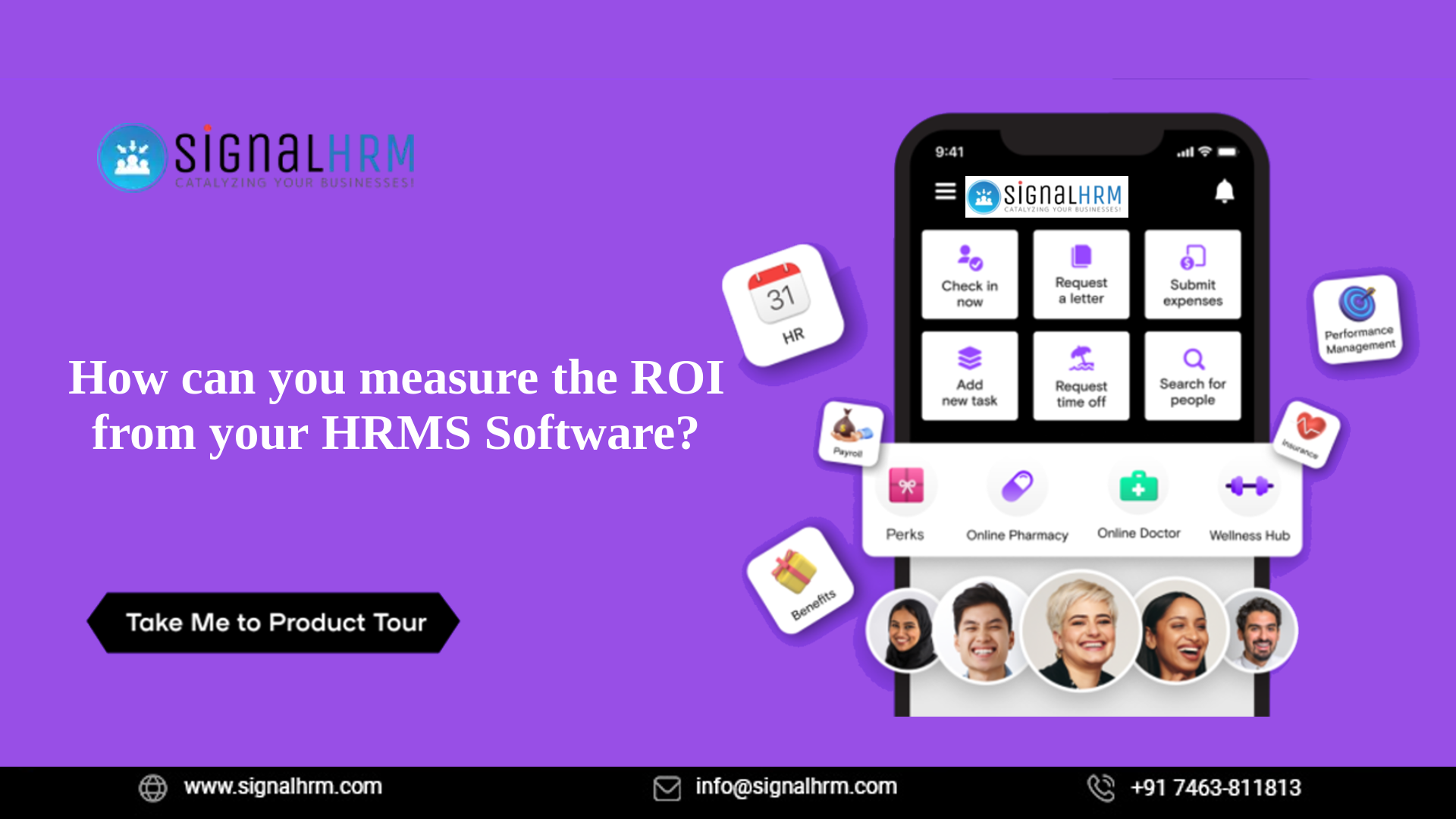
Measuring ROI (Return on Investment) from HRMS management software includes evaluating the financial benefits/losses against the total costs incurred in the implementation and maintenance of the system. Calculating the ROI enables the HR department to analyze the effectiveness of the HR initiatives within an organization.
It is challenging to measure the value that people bring to a business. Therefore, small businesses are reluctant to invest in areas where obtaining tangible results isn’t possible immediately along with the constraint of limited financial resources. Investing in HRMS software transforms the organizational operations and automates the administrative processes. Let’s find out how you can calculate the ROI of an HRMS software and what benefits it offers.
How to Measure ROI of HRMS?
To measure the ROI of HRMS software, you need to identify the costs, set objectives, benefits obtained, and metrics and use the ROI calculation formula. Let’s understand in detail.
Set your objectives: Define what results do you want to obtain using HRMS. Is it enhancing employee performance, satisfaction, or retention? Do you want to track leaves and attendance accurately without having to micromanage? Or do you want to generate reports that are insightful and give a clear view of all the processes across the organization? Ensure you set SMART goals.
Estimate the costs: Figure out how much can you afford to invest in the HRMS software and associated expenses. Consider all the costs such as initial investment, ongoing subscription, and maintenance charges, implementation and integration charges, and the cost of migrating from the existing system to the new one.
Measure benefits: Measuring the value that HRMS management software offers becomes difficult at times since all the outcomes cannot be measured. For example, HRMS plays an important role in enhancing employee engagement and morale with features such as self-service and streamlined processes. However, it is challenging to measure the exact monetary value of enhanced employee satisfaction. Therefore, businesses can measure the benefits in terms of increase in sales, profits, customer acquisition, and productivity.
Use the ROI formula: Next, use the below formula:
ROI= (Net Benefits / Total Costs) * 100, where
Net Benefits = Total Benefits - Total Costs
Total Costs = Initial Setup Costs + Ongoing Expenses
Total Benefits = Tangible Benefits + Intangible Benefits
For example, if your total value is $200,000 and your total investment is $100,000, your ROI is: ROI = ($200,000 - $100,000) / $100,000 x 100% = 100%
Compare and improve: In the last phase, organizations need to assess the ROI of HRMS software against the desired outcomes and established standards. Find out if they align with the organizational goals and financial plans. Check the performance in comparison to other HRMS management software in the industry. Evaluate the areas for improvement and make strategies to enhance ROI. With careful monitoring and analysis of your HRMS’s ROI, the HR teams can refine their strategies to obtain the desired outcomes.
By following the above steps, organizations can estimate the ROI of their HRMS software. It is essential to maintain transparency while calculating the ROI. First and foremost, you need to include all the costs associated with the implementation and usage of HRMS. Always use real-time data to get an accurate picture of how the investment would impact the finance and productivity of the organization. Consider the time and effort that is spent on administrative HR functions that can be automated. Assess the scalability and growth of the company to get an estimate of how soon you need to upgrade the HRMS.